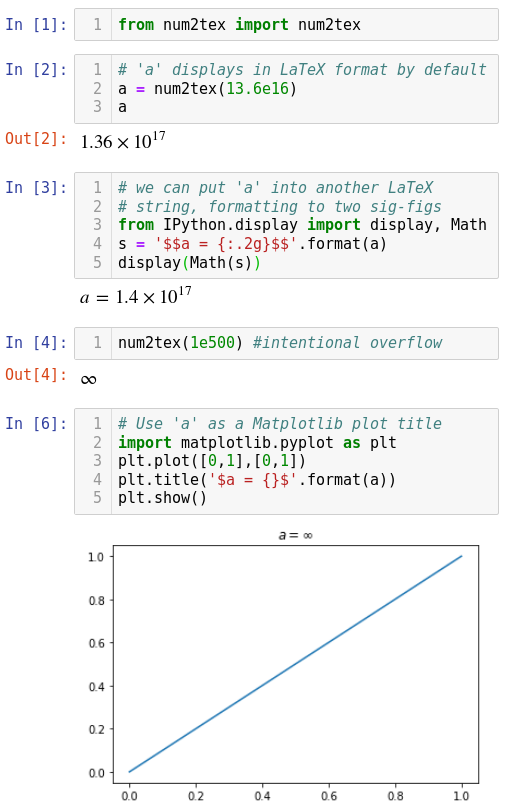num2tex converts a float or int into a TeX-formatted string. num2tex inherits from str.
Install with
pip install num2texnum2tex can be used in a similar manner to that of str
from num2tex import num2tex
print(num2tex(13.6e15))1.36 \times 10^{16}
which gives the same precision and float/scientific notation formatting as print(str(13.6e15)) or print(13.6e15) but in TeX format. For some numbers, the default str formatting may be unintuitive and give too many significant figures:
print(num2tex(9.876e15))9876000000000000.0
so instead we can use format as we would for a string, in this example specifying 3 significant figures:
print('a = {:.3g}'.format(num2tex(9.876e15)))a = 9.88 \times 10^{15}
Or we can set the precision from the beginning so that it always displays the desired number of significant figures.
a = num2tex(1.26e10,precision=2)
print('$a = {}$'.format(a))$1.3 \\times 10^{10}$
but keep in mind that precision can still be overridden by a format specifier:
print('$a = {:f}$'.format(num2tex(13.6e10,precision=2)))$a = 136000000000.000000$
num2tex will produce Jupyter-friendly output by default, and can be used in LaTeX-friendly modules like Matplotlib:
Use the num2tex.configure() option to change how the exponent is displayed:
>>>from num2tex import num2tex
>>>from num2tex import configure as num2tex_configure
>>>num2tex_configure(exp_format='cdot')
>>>num2tex(1.3489e17)
'1.3489 \cdot 10^{17}'
>>>num2tex_configure(exp_format='parentheses')
'1.3489 (10^{17})'- Add
formatoption e.g.a = num2tex(num=1.36e10,format='.2g') - TeX-rendering support for Google Collaboratory
- Additional testing
- Get user feedback
- Look into better Jupyter display of something like
print('$a = {}$'.format(a))without needing to importDisplayandMath, possibly by allowingnum2texto accept a string input, and using a different_repr_latex_()function if the input is a string.
num2tex is inspired by a relevant stack overflow question and Lauritz V. Thaulow's answer as well as a num2TeX function for GNU Octave by Karl Wette
